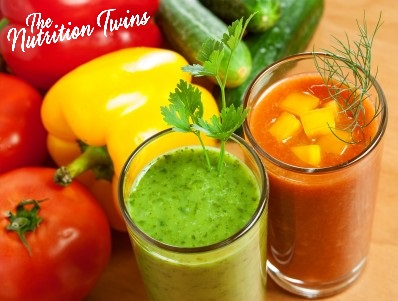You may have heard the term “juicing” before, but is it really the best way to get your fruits and veggies without actually eating them? And is it right for you?
Some people find that they really don’t eat many fruits or vegetables but drink the juice, so juicing is a great way for them to get some produce in their diets and some of the nutrients that they’d otherwise likely skip.
However, if you juice, don’t think you’re off the hook and don’t have to eat your fruits and veggies. A juicing machine extracts the juice from whole fruits or vegetables. The processing results in the nutrient-rich skin being left behind along with some valuable vitamins and minerals. Juicing also removes the pulp, which contains fiber. This explains why someone may only get some of the fruit or veggie nutrients when they drink the juice. You can add some of the leftover pulp back into the juice or use it in cooking, but many people just toss out the pulp.
On the bright side, some people are able to take advantage of the pulp that’s extracted when juicing. For example, they may use the leftover parts of the plant in different ways such as pulp added to your soup or in cooking or even making veggie crackers by dehydrating the pulp.
If you are that person who is juicing and simply squeezing the juice out of the fruit or veggie and then not using the remainder of the produce for anything else, try “blending” rather than juicing and you’ll keep the nutrients and pulp in your drink.
Juicing for weight loss? Be cautious. If you are juicing with fruit in the mix be aware that calories add up. Most pieces of fruit will provide just 4 ounces of juice. This means you could juice 4 pieces of fruit to get 12-16 ounces. This will make the juice at least 240 calories! You would know if you ate 4 pieces of fruit, but drink those same four pieces and you’ll likely not realize. (Most veggies add up much less quickly –3 cups of leafy greens are about 25 calories compared to most pieces of fruit that are 60-80 calories each).
The low-down:
Remember that juicing can serve as a good way to help people to get their veggies and fruits, especially for those people who would skip produce if they didn’t drink it. However, it’s best to eat the actual food to reap the most nutritional benefits. Whole foods are always best.
And if you’re relying on a juice fast to lose weight, we wouldn’t recommend it for any longer than a few days – a healthy weight loss is generated from a balanced diet and exercising of course!
Want to juice and don’t know how to get started? There are lots of varieties and ways to mix up different veggies and different fruits to make a delicious and nutrient-packed beverage. We recommend “blending” to keep the fiber. You can always start out with a simple fruit mixture by blending strawberries and bananas and adding a little spinach or kale and ice to get a smoothie or try apples, carrots and peaches and a hint of cinnamon.
Note: spinach and kale are smooth and mild veggies that are great ones to try in a smoothie. We love adding ginger and lemon to smoothies for a kick. They balance out greens very nicely.
What veggie or fruit blend have you tried? What do you think about the trend of juicing?



